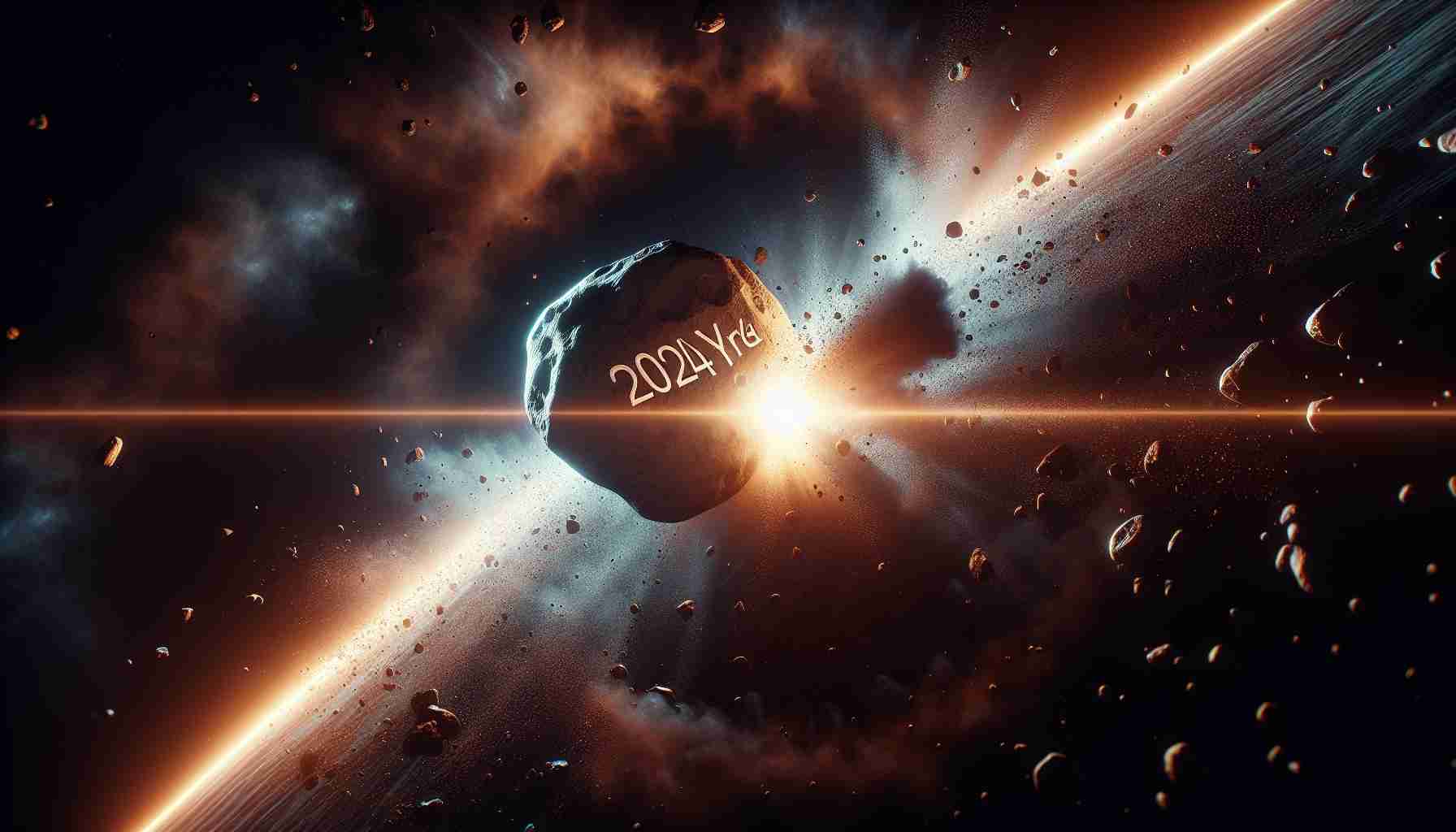- Asteroid 2024 YR4 is projected to approach Earth on December 22, 2032 with a 1.9% chance of impact.
- Discovered in December 2024, it measures between 130 and 300 feet, comparable to a small skyscraper.
- The European Space Agency (ESA) warns of serious damage potential if it were to hit, though such events are rare.
- Currently rated at Level 3 on the Torino Impact Hazard Scale, indicating a low risk situation.
- NASA tracks over 25,000 near-Earth objects, actively monitoring potential threats to Earth.
- Understanding and tracking these objects helps mitigate risks from space-related dangers.
Hold onto your stargazing gear! A newly spotted asteroid, 2024 YR4, is zooming through space with an intriguing fate—it might swing dangerously close to Earth by December 22, 2032. Initial calculations show a 1.9% chance of impact, up from the previous estimate of 1.6%. While those numbers sound alarming, don’t grab your emergency kit just yet—there’s still a whopping 99% likelihood it will safely zip by.
Discovered in December 2024 by a cutting-edge observatory in Chile, this cosmic traveler measures between 130 and 300 feet, akin to a small skyscraper or a football field. The European Space Agency (ESA) emphasizes that an asteroid of this size could cause serious damage if it were to hit, which happens only every few thousand years.
NASA’s Paul Chodas reassures us that while the asteroid demands our attention, we’re not facing a catastrophe—he echoes the scientific consensus of minimal risk. Currently rated at Level 3 on the Torino Impact Hazard Scale, it remains a close encounter that keeps astronomers and the public on alert.
In a world where space threats loom large, NASA is actively tracking over 25,000 near-Earth objects, keeping an eye on the skies to preserve our planet’s safety. So, let’s keep looking up—because with each precaution, we minimize the risks of our cosmic dance with the universe! Remember, knowledge is our best defense against the unknown.
Asteroid Alert: What You Need to Know About 2024 YR4 and Its Close Encounter with Earth
Asteroid 2024 YR4 has recently gained attention due to its potential close approach to Earth on December 22, 2032. With its estimated size between 130 and 300 feet, it raises questions about the risks associated with near-Earth objects (NEOs). Here’s some new, pertinent information including insights, comparisons, and forecasts regarding the asteroid and its implications.
Key Insights about Asteroid 2024 YR4
1. Potential Impact Ratio: Initially reported at 1.6%, the chance of a direct impact has seen a slight increase to 1.9%. While this fluctuation might seem concerning, it’s essential to understand that such probabilities are part of an evolving assessment process that continuously refines predictions as more data becomes available.
2. Historical Context: Asteroids of this size can inflict severe damage if they collide with Earth, reminiscent of historical impact events like the Chelyabinsk meteor in 2013 (roughly 66 feet) that exploded over Russia. Thus, 2024 YR4’s potential impact—which occurs roughly every few thousand years—is significant in the context of potential planetary defense scenarios.
3. Comparative Analysis: This asteroid is not unique; over 25,000 NEOs are monitored by NASA. For context, other notable asteroids like Apophis, which had a concerning trajectory, have since been deemed less dangerous after further observations, highlighting the importance of ongoing tracking.
Important Questions About 2024 YR4
1. What precautionary measures are being taken by space agencies?
– NASA, in collaboration with the European Space Agency (ESA) and other global observatories, is tirelessly tracking and calculating trajectories for NEOs like 2024 YR4. They utilize ground-based telescopes and radar systems to acquire detailed data on an asteroid’s orbit, size, and composition, which helps develop potential mitigation strategies.
2. How does the Torino Impact Hazard Scale work?
– The Torino Scale measures the impact risk of an object on a scale from 0 to 10. With 2024 YR4 currently rated at Level 3, it indicates a “meriting attention” scenario where further observations are warranted, but does not necessitate immediate public concern.
3. Could the asteroid’s trajectory change over time?
– Yes, factors such as gravitational influences from other celestial bodies or non-gravitational forces, like the Yarkovsky effect (change in an asteroid’s orbit due to thermal radiation), can alter an asteroid’s path. Continuous monitoring is crucial for adjusting risk assessments as the projected trajectory evolves.
Additional Information
– Predictions: While the focus is on the current trajectory, continuous observation is vital. Any significant updates will be communicated through scientific channels.
– Sustainability and Planetary Defense: As part of a broader discussion, investing in technology that can deflect or disrupt an asteroid’s path is seen as crucial for planetary defense.
For more detailed insights into the universe and space exploration, visit NASA where you can find comprehensive information regarding asteroids and other NEOs.













